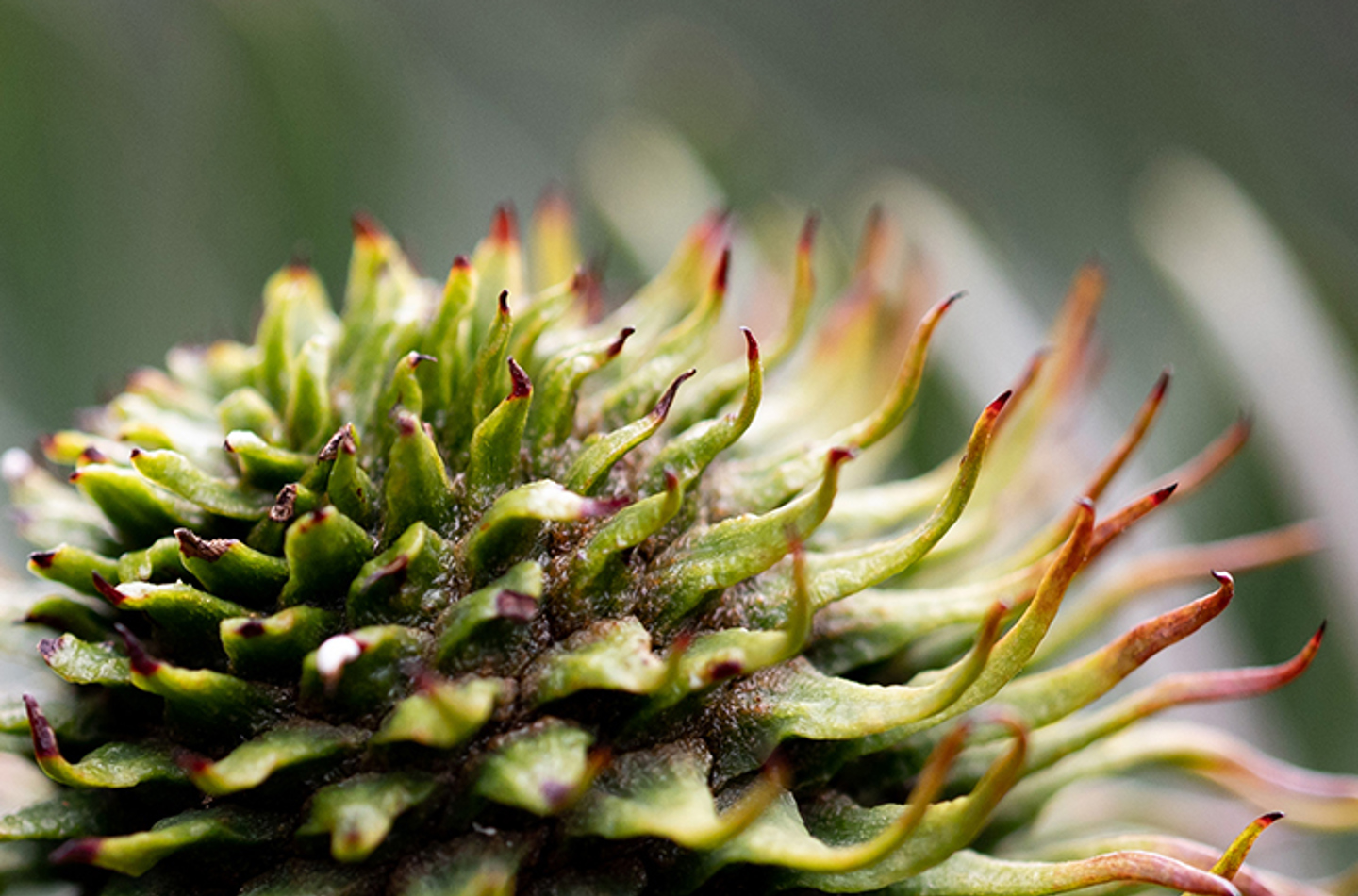
The Living Collection
at the Royal Botanic Garden Edinburgh
-
The Royal Botanic Garden Edinburgh is home to one of the world's richest collections of living plants and more than 13,500 species built up over centuries of global exploration.
-
Four gardens, one botanic world
Find out more about the collection
More to explore
Search the Collection
Arboretum (Tree collection)
RBGE's tree collection stands as testament to the good husbandry and infinite wisdom of generations of horticulturists who have tended the Garden over the centuries.
The oldest trees in the collection have stood witness to the development of the Garden and predate its arrival at the site in Inverleith. Look out for the venerable sweet chestnut (Castanea sativa) in the Rock Garden. Another highlight is the extremely rare Catacol whitebeam (Sorbus pseudomeinichii) by the East Gate.
There are just over 3,500 trees in the Garden, comprising more than 730 species from 56 families. Around two-thirds of the trees are of known wild origin.
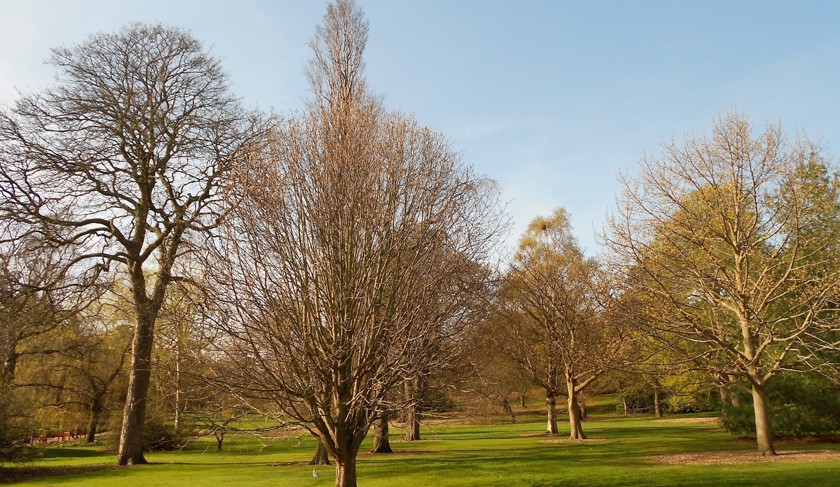
Rhododendrons
RBGE has been the major centre for rhododendron research since the late 19th century. Together, the collections in our four Gardens - Edinburgh, Benmore, Dawyck and Logan - comprise one of the world's richest assemblage of species rhododendrons. Around half of all the 1,000 known species are cultivated in the Gardens and include most of the temperate species and over one-third of those known in the tropics.
Around one-third of all rhododendrons, over 300 species, belong to the subgenus Vireya. RBGE has the largest cultivated collection of Vireya rhododendrons in the world. As natives of the mountains of South East Asia, most like a cool, moist, frost-free evironment. These plants thrive indoors in the Montane Tropics Glasshouse.
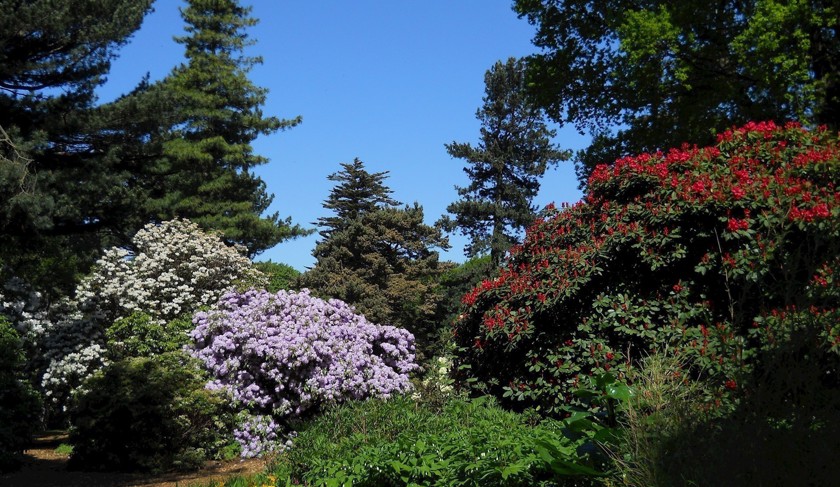
Rock Garden
Climb to the viewpoint at the highest point of the Garden and you will be rewarded with views over the Rock Garden and of Edinburgh's spectacular skyline, a stunning backdrop to the collection of over 5,000 plants from the world's mountains, as well as Arctic and dry rocky Mediterranean habitats. There are concentrations of plants from Chile, China, Europe, Japan, North America and South Africa.
Among the highlights are colourful spring flowering bulbs including dwarf daffodils, snowdrops and crocuses. Late spring and early summer sees the peak flowering of the dwarf rhododendrons and alpines throughout the area. At this time the true high alpines are at their best, from the European Pulsatilla to the North American Penstemon. Autumn highlights include the flowering of the numerous Colchicum species and the needles of Pinus sylvestris 'Aurea' turning from green to golden-yellow.
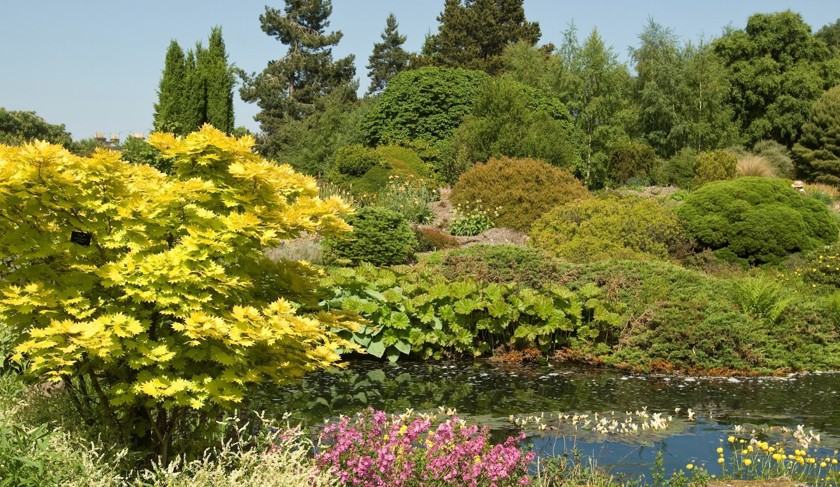
Woodland Garden
The Woodland Garden was extensively developed in the 1930s and 1940s, with large conifers planted to create a suitable microclimate for the rhododendrons and other woody plants that were being introduced from the Himalayas and China. The area is divided into the Upper and Lower Woodland Garden.
The Upper Woodland Garden is home to some magnificent trees, including the coast redwoods (Sequoia sempervirens) - among the world's tallest tree species. A circle of giant redwoods (Sequoiadendron giganteum) creates a cathedral-like atmosphere, making this a popular location for outdoor weddings and other ceremonies. These redwoods, planted in the 1920s, have now reached over 24 m in height. In 1990, the grove was renamed the John Muir Grove, honouring the Scots-born writer, explorer and conservationist who founded the US National Park system.
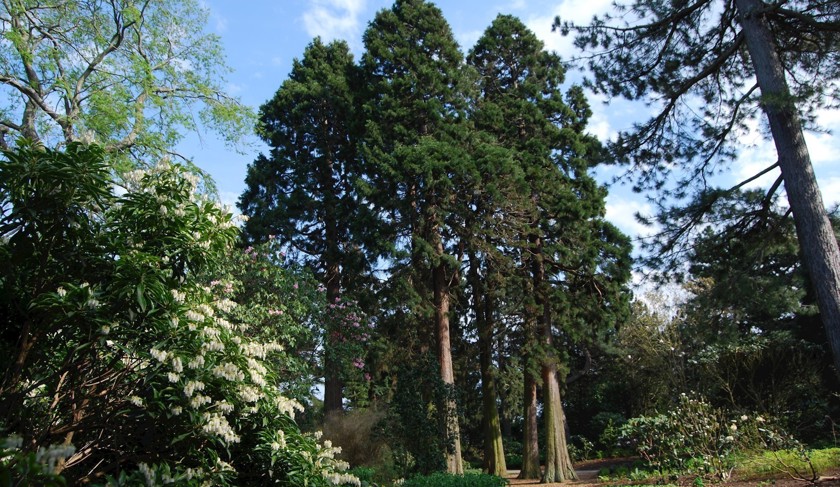
Other trees include many endangered conifers from around the world. Unusual rowan and birch add to the autumn colour with their fruits and turning leaves, and sit alongside beautiful magnolia species from Asia and North America that flower in the spring.
Other plantings include species rhododendrons, the giant Himalayan lily (Cardiocrinum giganteum) that flowers in the early summer and goes on to provide architectural seed heads which last throughout the winter. Herbaceous plants include North American trillium species, Meconopsis (Himalayan blue poppies), alongside other species from Asia and Europe, including Hosta, Lilium and Primula species.
The Lower Woodland Garden includes micro habitats created by using oak logs, pine root plates and blocks of peat, creating the perfect habitat for dwarf ericaceous shrubs, beautiful autumn flowering gentian species and drifts of primula species from the Himalayas.

Chinese Hillside
The Chinese Hillside highlights RBGE's well-established links with China and is perhaps one of the largest collections of Chinese plants being cultivated outside China. Formally opened in 1997, this part of the Garden recreates for visitors the experience of climbing a hillside in south west China and features around 1,600 plants collected from this area of China, many of which are rare and endangered in their native habitat. The plants, which include a range of beautiful rhododendrons, as well as various species of Cotoneaster and Sorbus, have been planted to drift through the site and grow together in a more naturalistic way.
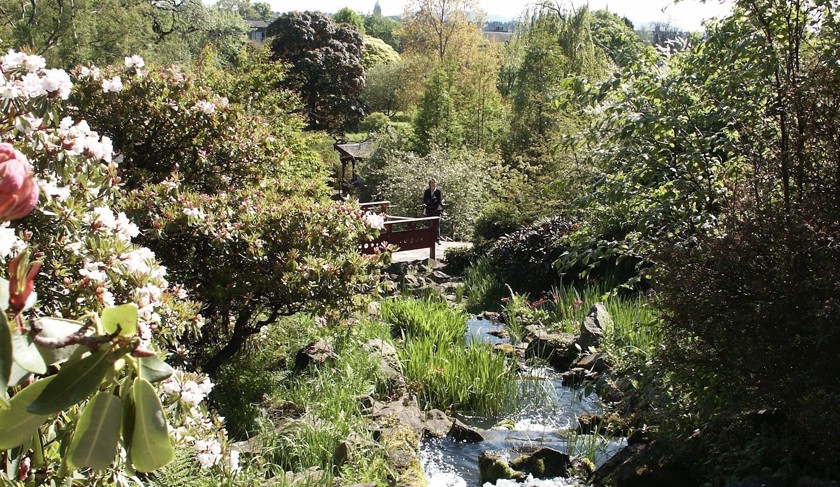
Beech Hedge and Herbaceous Border
At a commanding height of 8m the Beech Hedge runs along the full length of the 165m-long Herbaceous Border. The hedge was originally planted in 1906 with 200 beech trees (Fagus sylvatica) of heights between 0.3 - 1.5m (1 - 5 ft) Today there are a total of 158 individual trees in the hedge and it takes approximately two weeks for two member of staff to cut the hedge
The Herbaceous Border was created in 1902 and over the last 10 years both the eastern and western sections have been replanted to provide mid to late summer colour through a colour graded planting scheme starting and finishing with purples and blues and going through shades of yellows and reds.
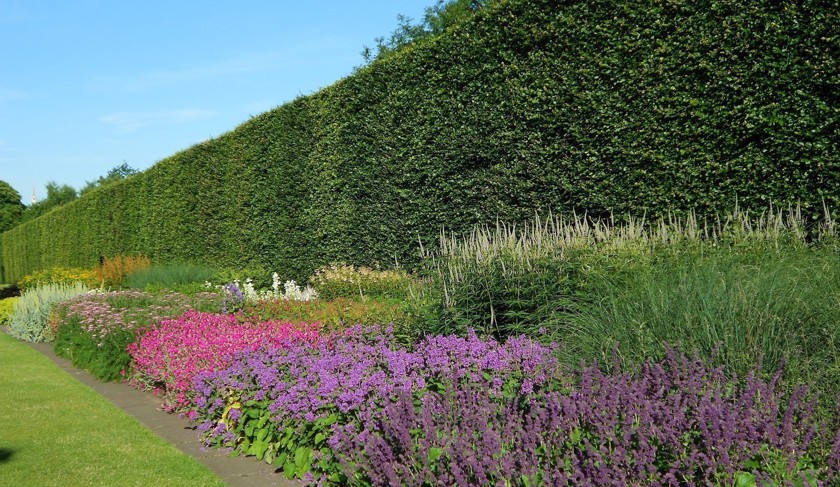
Alpine House and Courtyard
(currently open weekends only)
Our traditional-style Alpine House provides a dry environment for plants more used to spending winter beneath a protective blanket of snow. The plants are all grown in clay pots and plunged into sand, keeping roots at an even cool temperature and level of moisture. A fan is used in the Alpine House to imitate the windy mountain conditions, and the plants are watered carefully to ensure no moisture reaches their foliage or flowers.
Outside, in the Alpine Yard, a range of troughs are used to create individual landscapes representing miniature mountain tops. The limestone wall retaining the Courtyard was created to accommodate plants that prefer alkaline soil and enjoy a deep root run.
The Tufa House is dedicated to growing and displaying alpine plants in the naturalistic surroundings of tufa, a type of soft rock.
The plants growing on the tufa wall are all cliff-dwellers in the wild, where their seed will blow into cracks and fissures in rock faces and become established.
The wall backing the Alpine Courtyard is south-facing and provides the perfect opportunity for climbing plants from warmer climes to thrive alongside a 'hot border' of spiky shapes and brilliant colours. Particular highlights include the South African Phygelius capensis and Agapanthus campanulatus in the summer months. The pineapple broom (Cytisus battandieri), from Morocco, produces sweetly scented yellow pineapple flowers atop its silvery foliage, whilst contrast is provided by the long-lasting blue 'thistle' flowers of Eryngium giganteum.
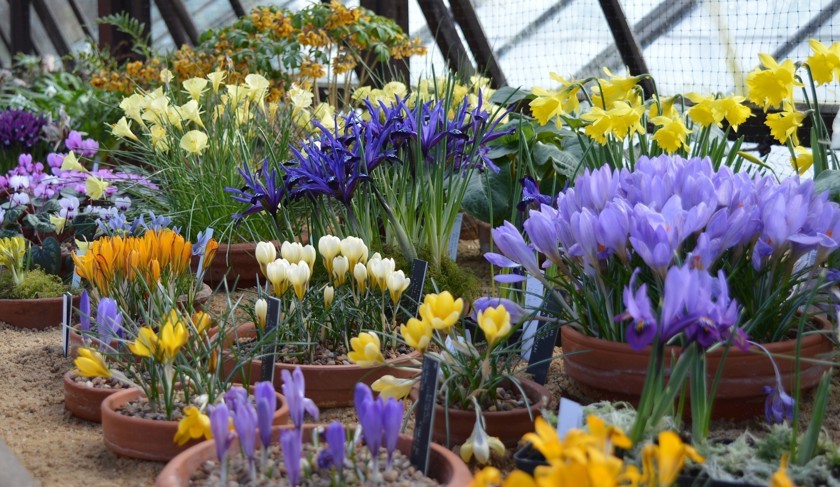
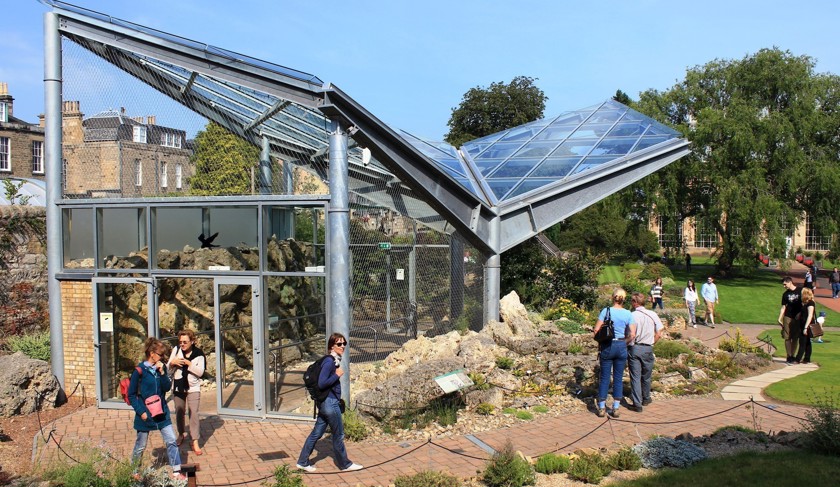
Biodiversity Garden
The Biodiversity Garden contains over 500 different plants arranged in evolutionary order as one ascends the path from the John Hope Gateway with the most ancient plants at the bottom and more recently evolved plant families at the top each telling a particular story. It has been designed to display as much plant biodiversity as possible and aims to create a sense of wonder about the beauty and value of plants. It includes plants from many different families, with a wide diversity of leaves and flowers. Plants with different life forms such as bulbs, herbaceous plants, shrubs and climbers are represented. Many plants that are a source of food, medicine, dyes and fibres have also been included in the design.
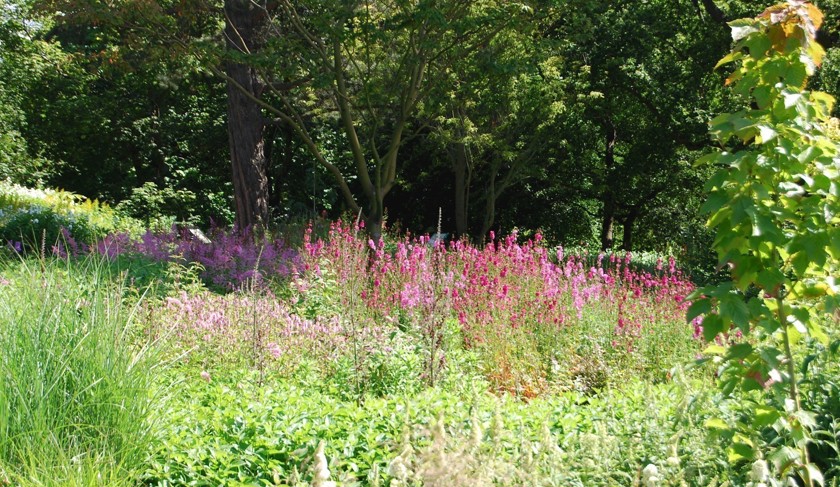
Demonstration Garden
The Demonstration Garden is a vibrant and dynamic space dedicated to engaging people in hands-on food growing.
The Edible Gardening Project, supported by players of People's Postcode Lottery, teaches the skills and knowledge people need to grow their own food. The crops are harvested and used for public events and community group cooking sessions, and to supply our onsite caterers.
You will also see plots assigned to RBGE's students on the HND in Horticulture and Plantsmanship course, plots looked after by local school groups and the Fruit Garden demonstrating the best cultivars for domestic gardens in the East of Scotland climate. The Physic Garden beds are tended by students from the RBGE Diploma in Herbology course.
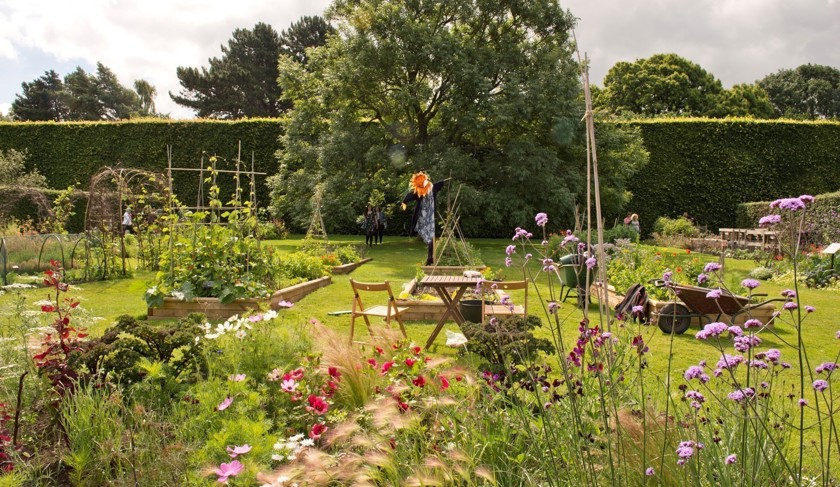
Botanics Recommends
-
Explore our range of unique gifts and more. Every purchase supports the Garden.
-
Explore our unique venues, suitable for every occasion
-
Discover a range of books inspired by the RBGE's work and collections
-
Cultivate your curiosity with our programme of courses for all ages and interests.